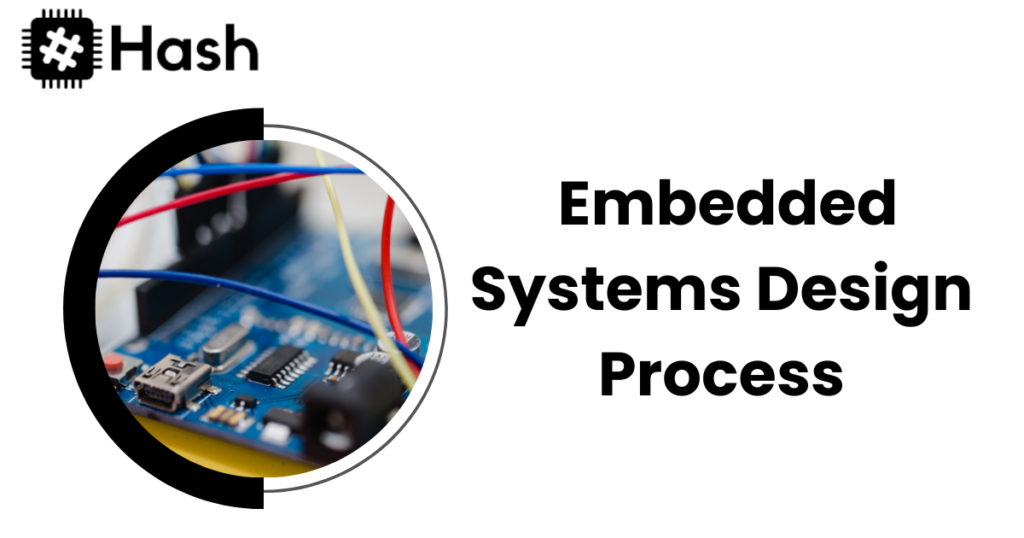Mastering Embedded Firmware Development Languages: A Comprehensive Guide
Embedded firmware development languages
Embedded firmware development is a crucial aspect of modern technology, enabling devices to perform specific functions with accuracy and efficiency.
Embedded firmware is a type of software that is built into hardware devices such as microcontrollers, sensors, and other electronic components, allowing them to perform specific functions.
Embedded firmware development languages are the tools used to create this software.
In this comprehensive guide, we will explore the world of embedded firmware development languages, from the basics of programming to advanced techniques.
We will cover the most popular languages used in embedded firmware development, including C, C++, Assembly, and Rust, and delve into the pros and cons of each language.

If you want know more Embedded Systems, you can Visit: Embedded Hash
Basics of Embedded Firmware Development
Embedded firmware development languages involve creating software that is built into hardware devices. This software is responsible for controlling the device’s functions and ensuring that it performs its intended tasks correctly.
Embedded firmware development requires a good understanding of programming concepts, as well as knowledge of the specific hardware being used.
The development process typically involves writing code in a programming language and then compiling it into machine code that can be understood by the hardware.
The code is then loaded onto the device’s memory, where it can be executed.
The purpose of embedded firmware development languages is to enable efficient and reliable control over the hardware, optimising performance, power consumption, and responsiveness.
It requires a deep understanding of both the hardware and the programming languages used to interact with it.
Importance of Embedded Firmware Development
Embedded firmware development plays a crucial role in various industries and applications. Here are a few examples:
Consumer Electronics: Embedded firmware powers numerous consumer devices, including smartphones, smart TVs, wearables, and home automation systems. It ensures smooth operation, connectivity, and user-friendly interfaces.
Automotive and Transportation: Modern vehicles heavily rely on embedded firmware to control engine management, navigation systems, driver-assistance features, and infotainment systems. Firmware ensures the safety, efficiency, and comfort of passengers.
Industrial Automation: Embedded firmware is integral to industrial control systems, including programmable logic controllers (PLCs) and supervisory control and data acquisition (SCADA) systems. It enables real-time control and monitoring of industrial processes.
Internet of Things (IoT): In the IoT ecosystem, embedded firmware connects and manages networked devices, facilitating data collection, analysis, and remote control. It enables seamless communication and interoperability between devices.
Medical Devices: Firmware, or embedded software, is essential in medical devices: it ensures that measurements are accurate and controls function properly.
Aerospace and Defense: Embedded firmware is critical for avionics systems, unmanned aerial vehicles (UAVs), and defense applications. It provides reliable control, navigation, and communication capabilities.
Mastering embedded firmware development languages is essential for professionals involved in these industries and anyone seeking to enhance their skills in developing efficient and reliable firmware solutions.
If you wanted learn more about Embedded systems Firmware Programming Languages by 15= Years Expert get Enroll now for free Demo ⬇️
Firmware Programming Languages
There are several Firmware programming languages used in embedded firmware development, each with its own strengths and weaknesses. The most popular languages used in embedded firmware development are C, C++, Assembly, and Rust.
C
C is a high-level language that is widely used in embedded firmware development. It is a popular choice because it is relatively easy to learn and has a large community of developers. C is also a versatile language that can be used for a wide range of applications.
One of the main advantages of C is that it is a low-level language, which means that it can interact directly with hardware. This makes it an ideal choice for embedded firmware development, where hardware control is essential. C is also a fast and efficient language, making it suitable for real-time applications.
C++
C++ is an extension of C and is also widely used in embedded firmware development. It is a popular choice because it offers object-oriented programming, which makes it easier to write complex programs. C++ is also a versatile language that can be used for a wide range of applications.
One of the main advantages of C++ is that it is a high-level language, which means that it is easier to write code than in C. C++ also offers better memory management than C, making it more suitable for complex applications.
Assembly
Assembly is a low-level language that is used to write code directly for the hardware. It is one of the best choices for embedded firmware development because it allows for precise control over hardware functions. Assembly is also a fast and efficient language, making it suitable for real-time applications.
One of the main advantages of Assembly is that it is a low-level language, which means that it can interact directly with hardware. This makes it an ideal choice for embedded firmware development, where hardware control is essential. Assembly is also a fast and efficient language, making it suitable for real-time applications.
Rust
Rust is a relatively new language that is gaining popularity in embedded firmware development. It is a systems programming language that is designed to be fast, safe, and concurrent. Rust is a popular choice because it offers memory safety and thread safety, making it ideal for complex applications.
One of the main advantages of Rust is that it is a modern language that offers memory safety and thread safety, making it easier to write complex programs. Rust is also a fast and efficient language, making it suitable for real-time applications.
Firmware development for embedded systems
Firmware development for embedded systems plays a critical role in the operation and functionality of a wide range of electronic devices.
Firmware serves as the bridge between the hardware and software in embedded systems. It is a type of software that is directly embedded into the read-only memory (ROM) or flash memory of a microcontroller or microprocessor.
Unlike general-purpose software applications that can be easily updated or modified, firmware is typically designed to be non-volatile and provides the essential instructions and control algorithms necessary for the embedded system to perform its designated tasks.
The development of firmware for embedded systems involves several stages, including design, coding, testing, and deployment. Let’s explore each of these stages in more detail:
- Design: The firmware development process begins with a thorough understanding of the requirements and specifications of the embedded system. This involves analyzing the hardware components, determining the system’s functionality, and identifying the specific tasks it needs to perform.
- Coding: Once the design phase is complete, the actual coding of the firmware takes place. This involves writing software code in a low-level programming language, such as C or assembly language, which can directly access the hardware resources of the embedded system.
- Testing: Testing is a crucial phase in firmware development to ensure the reliability and functionality of the embedded system. Different types of testing, such as unit testing, integration testing, and system testing, are performed to verify that the firmware operates correctly under various conditions.
- Deployment: Once the firmware has undergone rigorous testing and has been deemed stable and reliable, it is deployed onto the embedded system.
- Maintenance and Updates: Firmware development for embedded systems doesn’t end with deployment. As new requirements emerge or issues are discovered, firmware updates may be necessary. These updates may involve bug fixes, performance improvements, security enhancements, or the addition of new features.
It’s worth noting that firmware development for embedded systems requires specialized knowledge and expertise due to the close integration of software and hardware.
Developers must have a deep understanding of the target microcontrollers or microprocessors, low-level programming languages, system architecture, and hardware constraints.
Advanced Techniques in Embedded Firmware Development
Advanced techniques in embedded firmware development include real-time operating systems, interrupts, and debugging tools.
- Real-time operating systems are used to manage multiple tasks simultaneously and ensure that they are executed in a timely manner.
- Interrupts are used to handle events that occur outside of the normal program flow.
- Debugging tools are used to identify and fix errors in the code.
Choosing the Right Language for Your Project
- When selecting a programming language for embedded firmware development, several factors need to be considered. Each project has its unique requirements and constraints, and choosing the most appropriate language can significantly impact development efficiency, performance, and maintainability. Here are the key factors to consider when making this decision:
- Project Requirements and Constraints: Understanding the project requirements is essential for selecting the right language. Consider the following aspects:
- Processing Power: If the target device has limited processing power, a language that allows you to control and optimize code at the source level might be suitable such as C or assembly language. For more powerful devices, higher-level languages like Python or Go can be considered.
- Memory Constraints: If memory is a scarce resource, languages with minimal runtime overhead, such as C or assembly language, are preferred. On the other hand, if memory constraints are not critical, higher-level languages like Python or Java can provide better productivity.
- Real-Time Requirements: If the project involves real-time tasks, a language with deterministic and low-latency behavior, such as C/C++ or Embedded C, is essential. Real-time operating systems (RTOS) often have specific language requirements to meet timing constraints.
- Safety and Reliability: For safety-critical systems, languages like Ada or Rust, which provide strong typing, runtime checks, and memory safety, are well-suited. These languages offer features that help prevent common programming errors and ensure system reliability.
- Interoperability: If the project requires seamless integration with existing software components or protocols, choosing a language with extensive library support or native interoperability, such as C/C++, can simplify integration efforts.
Performance Considerations
The performance of the firmware is a critical aspect to consider when selecting a programming language. The language should enable efficient utilization of system resources and provide the necessary control over timing and execution. Consider the following performance-related factors:
- Execution Speed: If the project demands high execution speed, low-level languages like C/C++ or assembly language are often preferred. These languages provide direct control over the hardware and allow fine-tuning for performance-critical sections of code.
- Code Size: In resource-constrained environments, minimizing code size is crucial. Low-level languages like C or assembly language provide better control over code size compared to higher-level languages. However, optimizing code size might require sacrificing readability and development speed.
- Power Consumption: In battery-powered devices or systems with strict power constraints, selecting a language that enables efficient power management is important.
- Multithreading and Concurrency: If the project requires concurrent execution or multithreading, languages like Go or Rust, which provide built-in support for concurrency, can simplify development and improve performance.
Hardware Compatibility
The chosen programming language should have good hardware compatibility with the target device. Consider the following hardware-related factors:
- Processor Architecture: Different processors and microcontrollers have varying levels of language support. Ensure that the chosen language has a compiler, toolchain, and libraries available for the target architecture.
- Peripherals and Interfaces: Consider the availability of libraries or driver support for interacting with specific peripherals and interfaces required by the project. Some languages have better community support and readily available libraries for common hardware components.
- Development Tools: Assess the availability and quality of development tools, such as IDEs, debuggers, simulators, and emulators, for the chosen language. Good tooling support can significantly enhance the development experience and productivity.
By carefully considering these factors, developers can make an informed decision and choose the most appropriate programming language for their embedded firmware development projects.
Conclusion
Embedded firmware development languages are essential tools for creating software that is built into hardware devices. C, C++, Assembly, and Rust are the most popular languages used in embedded firmware development, each with its own strengths and weaknesses.
By understanding the basics of programming and the specific requirements of your project, you can choose the best language for your needs and create software that is efficient, accurate, and reliable.
If wanted to learn more about Embedded Systems development and languages get
Enroll Now ⬇️ for a free Demo
Frequently asked questions about "Embedded Firmware Development Languages"
Embedded firmware development is the process of creating software that is built into hardware devices such as microcontrollers, sensors, and other electronic components, allowing them to perform specific functions.
The most popular programming languages used in embedded firmware development are C, C++, Assembly, and Rust.
C is a low-level language that can interact directly with hardware, making it an ideal choice for embedded firmware development. It is also a fast and efficient language, making it suitable for real-time applications.
Assembly language is a low-level language used to write code directly for the hardware. It allows for precise control over hardware functions and is fast and efficient, making it suitable for real-time applications.
Rust is a modern language designed to be fast, safe, and concurrent. It offers memory safety and thread safety, making it ideal for complex applications. Rust is gaining popularity in embedded firmware development due to its safety features and efficiency.
Real-time operating systems are used to manage multiple tasks simultaneously and ensure that they are executed in a timely manner. They are used in applications that require real-time response, such as control systems and robotics.
The choice of firmware programming language depends on factors such as hardware architecture, resource limitations, performance requirements, and safety considerations. Evaluate the specific requirements of your project to make an informed decision.
Interrupts are signals that are sent to the processor to interrupt the current task and execute a specific function. They are used to handle events that occur outside of the normal program flow, such as input/output (I/O) operations and system events.
Debugging tools are used to identify and fix errors in the code. They include simulators, emulators, and debuggers. Debugging tools are essential for ensuring that the software is reliable and free from errors.
High-level languages like Python are not typically used for firmware development due to their abstraction and performance overhead. Firmware development requires low-level control, which is better achieved with languages like C and assembly.







 embeddedhash.in@gmail.com
embeddedhash.in@gmail.com